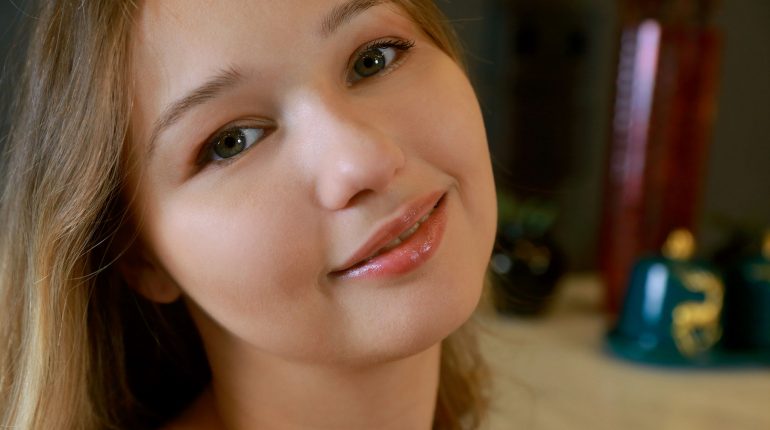When Penelope Grant collapsed into her desk chair one Tuesday afternoon, she wasn’t overreacting, being dramatic, or “just tired.” She was burnt out — emotionally, mentally, and physically.
The kind of burnout that slowly builds until the body finally sounds an alarm loud enough to ignore. “I remember staring at my screen,” she says. “My inbox was overflowing, my heart was racing, and I literally could not move. My brain just froze.”
At 34, Penelope was already a senior operations manager at a fast-growing tech company in Austin. She had the job she wanted, the salary she dreamed of, and the responsibilities she once believed proved her worth. But underneath the success story, her daily life was cracking. Late-night emails, early-morning meetings, skipped lunches, missed workouts, and chronic anxiety were the rhythm of her every week. “I didn’t realize how unhealthy my life had become,” she says. “When you’re in survival mode long enough, it starts to feel normal.”
Burnout didn’t come suddenly; it grew silently. Penelope pushed through headaches, irritability, insomnia, and constant fatigue. She took pride in being “the person everyone could count on.” But as weeks turned into months, her motivation faded. She lost interest in hobbies, stopped calling friends, and lived in a constant haze of exhaustion. “I wasn’t living anymore,” she says. “I was just functioning — and barely.”
The day she broke down in her office became her turning point. A coworker gently suggested she take a sick day. “I went home embarrassed, ashamed, and scared,” she says. “But that night, I googled ‘burnout recovery.’ That search changed my life.”
Understanding Burnout: What Penelope Learned the Hard Way
Burnout is more than stress. According to the American Psychological Association, burnout is a prolonged response to chronic emotional and interpersonal stressors. It shows up as exhaustion, reduced productivity, cynicism, irritability, and emotional withdrawal. Women in high-pressure roles — especially those balancing caregiving responsibilities — experience burnout at higher rates than men.
“I thought burnout meant I just needed a vacation,” Penelope says. “But the research told me otherwise. Burnout is a physiological and psychological breakdown. Your body is telling you that your lifestyle is no longer sustainable.” What shocked her most was how burnout hijacks the nervous system. Chronic stress elevates cortisol, disrupts sleep, affects digestion, weakens immunity, and impairs emotional regulation. “I finally understood why I felt sick all the time,” she says. “My nervous system was in survival mode 24/7.”
She also discovered burnout affects cognitive function — impairing memory, concentration, and decision-making. “I used to be sharp,” Penelope says. “Then suddenly, I couldn’t remember simple things. It felt like my brain was full of fog.” Doctors call this “stress fatigue,” a state where the prefrontal cortex — the part of the brain responsible for planning and focus — becomes overwhelmed.
Penelope realized she couldn’t simply “push harder” anymore. She had to rebuild her relationship with work, rest, and self-care. But instead of jumping directly into therapy (which she eventually did), she found herself drawn to something more accessible and immediate: self-care apps for burnout prevention. Digital tools became the first step in her healing journey.
How Digital Self-Care Became Penelope’s Lifeline
At first, she hesitated. “I wasn’t sure an app could fix my life,” she laughs. “It sounded too simple, too modern.” But on her first day of leave, she explored apps recommended for stress relief, burnout prevention, emotional wellness, and self-regulation. To her surprise, they didn’t feel superficial — they felt supportive.
The first app she downloaded was Headspace. “The voice, the visuals, the tone — everything was calming,” she recalls. Guided breathing sessions helped slow her racing heart. Short meditations helped her sleep. Over the next week, she added more apps:
-
- Calm for anxiety and bedtime stories.
-
- Breathwrk for nervous system regulation.
-
- Waking Up for mindfulness and Stoic philosophy.
-
- Sanvello for cognitive behavioral therapy (CBT) tools.
-
- Shine for emotional wellness specifically designed for women and people of color.
When she tried Shine for the first time, she felt something she hadn’t felt in months: resonance. “Shine felt like it was speaking directly to me,” Penelope says. “It didn’t pretend burnout was just stress. It acknowledged trauma, expectations, gender roles, and cultural pressures.”
These apps helped Penelope understand burnout not as a personal failure but as a predictable outcome of chronic overload. They offered structure, tools, and emotional validation at times when she didn’t have the bandwidth to seek therapy or create a self-care plan on her own.
The Psychology Behind Why Apps Actually Help
Penelope was surprised to learn that digital self-care tools are backed by science. Behavioral psychologists explain that burnout recovery requires three things:
-
- regulating the nervous system,
-
- building consistent micro habits,
-
- and reducing cognitive load.
Self-care apps support all three. Breathwork exercises calm the amygdala, the brain’s panic center. Mindfulness sessions increase activity in the prefrontal cortex. Journaling features improve emotional processing. Progress tracking and daily reminders form habit loops that reprogram overstressed brains.
“These apps don’t fix your life for you,” Penelope says. “They simply make healing easier to start — and harder to abandon.”
Burnout is often rooted in neglect, not defiance. Women, especially high-achieving women, often abandon self-care before they abandon work. “I realized my burnout wasn’t caused by weakness,” she says. “It was caused by silence. I wasn’t listening to myself.” Self-care apps, by design, amplify the inner voice women often suppress.
Penelope’s Self-Care Routine That Helped Her Recover
After three months of experimenting with dozens of tools, Penelope crafted a routine that she still follows today. It didn’t require quitting her job, becoming a monk, or rearranging her entire life. It required intention — and a willingness to start small.
1. Morning Nervous System Reset
Penelope learned that the first 10 minutes of the day can either stabilize or destabilize the entire nervous system. Instead of reaching for her phone, she uses Breathwrk to perform a two-minute guided breathing reset. “It slows down cortisol spikes that normally hit first thing in the morning,” she says.
She then listens to a five-minute gratitude meditation on Headspace. “It shifts my mindset from urgency to presence,” she explains. “Before self-care, my mornings felt like a fire drill. Now they feel like a grounding ritual.”
2. The Midday Burnout Buffer
Midday used to be Penelope’s breaking point — the moment her energy crashed and anxiety peaked. She began using Calm’s “Daily Calm” sessions during lunch breaks. Sometimes she closed her office door; sometimes she sat in her car. “It was the first time I let myself pause,” she says.
She also used Sanvello’s CBT tools to reframe anxious thoughts. The app helped her recognize distorted thinking patterns — catastrophizing, overgeneralizing, people-pleasing — that were fueling her burnout. “I didn’t realize how much pressure I put on myself,” she says. “The app helped me see my thoughts clearly, instead of living inside them.”
3. The 30-Minute Evening Unwind
Evenings used to be a chaotic blur of unfinished tasks. Now Penelope creates a deliberate transition between work and rest.
-
- She spends 10 minutes journaling her thoughts in the Shine app.
-
- She listens to a calming playlist while cooking dinner.
-
- She avoids screens for 45 minutes before bed.
-
- She uses Calm’s sleep stories when her mind feels restless.
These small habits reset her circadian rhythm and reduce the mental “carryover” that once kept her awake at midnight.
The Emotional Transformation That Followed
Within weeks, Penelope noticed changes she didn’t expect. Her mood stabilized. Her irritability faded. She started finding joy in small things again — cooking, reading, taking evening walks. Her sleep improved dramatically. Her digestion normalized. She stopped waking up with chest tightness.
Her relationships improved too. “I wasn’t snapping at my partner or avoiding friends anymore,” she says. “Burnout had made me numb. Self-care made me human again.”
She also became more assertive at work. With newfound awareness, she set boundaries:
-
- No emails after 7 p.m.
-
- No yes to every request.
-
- No apologies for protecting her mental health.
“Self-care apps didn’t make me soft,” she says. “They made me strong. Strong enough to say no. Strong enough to ask for help. Strong enough to stop abandoning myself.”
Penelope’s Guidance for Women Struggling With Burnout
Penelope now shares her experience with women in leadership forums, community groups, and mentorship programs. Her guidance is direct, compassionate, and grounded in lived experience:
-
- Start before the crisis. “Don’t wait until you crash. Burnout prevention is easier than burnout recovery.”
-
- Use digital tools as support, not solutions. “Apps guide you. But healing happens when you act on what they teach.”
-
- Build micro-habits. “Five minutes of breathing is better than an hour of stress.”
-
- Honor rest as a responsibility. “Your body is not a machine. Maintenance is mandatory.”
-
- Don’t fight burnout alone. “You’re not weak for needing help — you’re human.”
Penelope ends every talk with the same line: “Burnout happens when you stop hearing yourself. Recovery begins the moment you start listening again.”
Final Reflection
Penelope often reflects on her journey with a mixture of pride and disbelief. “I used to think self-care was indulgent,” she says. “Now I know it’s the foundation of survival.” She still uses her apps daily — not because she is broken, but because maintenance matters. “Self-care isn’t a backup plan,” she says. “It’s the plan.”
Her transformation wasn’t an overnight miracle; it was a series of small choices made consistently. Together, those choices rebuilt her health, renewed her confidence, and restored her joy. “If an app can help someone avoid the kind of burnout I went through,” she says, “why not try it? Why not give yourself that chance?”




























































